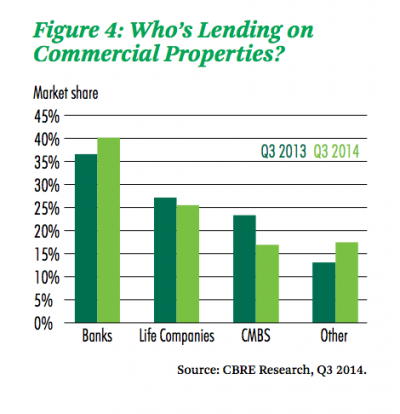Retail Lending Surges As Investors Hunt Yield: CBRE
By Guelda Voien January 14, 2015 4:20 pm
reprints

Lending on retail properties in the U.S. skyrocketed in the first three quarters of 2014, up more than 50 percent from the same period the year before, a new report from CBRE (CBRE) provided exclusively to Mortgage Observer shows.
Driving the trend was the appetite for yield, as low interest and cap rates drove the expedient investor away from the tried and true multifamily sector and into the arms of retail.
“While plentiful liquidity has contributed to these changes, the steady improvement in real estate fundamentals—which have spread well beyond the multifamily sector to the office, industrial and retail sectors—has contributed to increased risk-taking,” the report, called CBRE’s U.S. Lender Forum, reads.
Lending on office and industrial assets also grew, up 20 percent and 30 percent, respectively, compared with 2013. The report tracks only deals completed by CBRE brokers, and so does not specify origination volume.
The multifamily sector was essentially on par, the report says, and office lending fell slightly.
“Capital remains attracted to multifamily housing, although growth appears to have leveled off as prime acquisition opportunities have become highly competitive,” the report says.
Meanwhile, banks increased their already healthy chunk of non-agency commercial lending in late 2014, accounting for 40 percent of origination in the third quarter, up from 34 percent in the second quarter.
“We’ve seen how banks have increasingly offered longer-term financing that is competitive with life companies and conduits,” said Brian Stoffers, global head of debt and structured finance, in the report. “It is interesting to note that among the permanent loan closings in Q3 2014, average bank LTVs were only slightly below conduit LTVs.”
Floating rate loans also accounted for more transactions in the third quarter than in the second, rising to about 33 percent of all loans from 26 percent. Nearly half of bank lending was floating rate, the report says.


